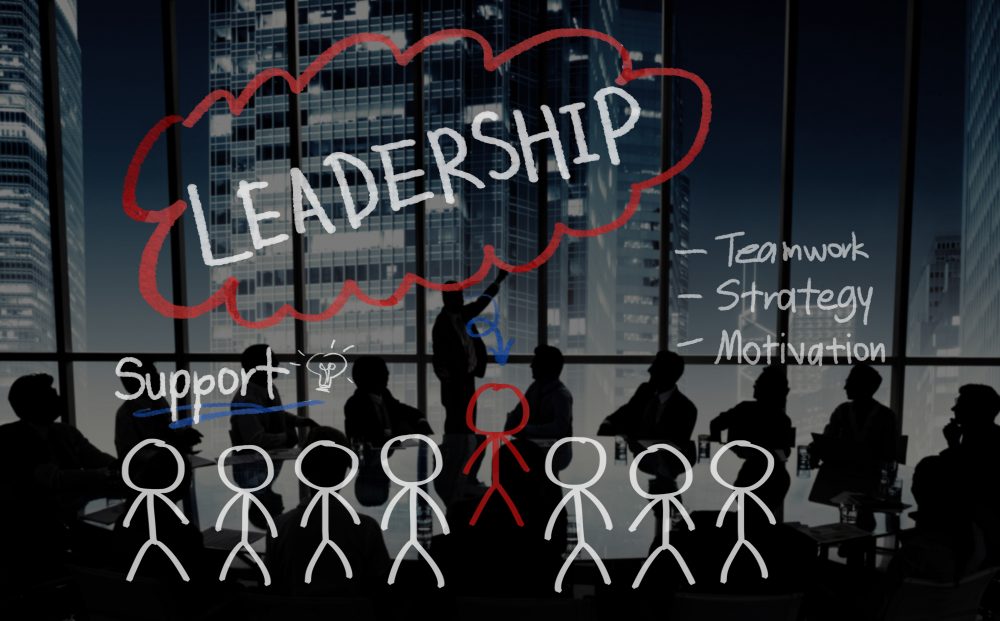1. An Authentic Leadership Style – is when there is matching of your own personal purpose with that of the organisation in which you’re leading. Because that means you can bring yourself through the door each morning and not pretend be something or someone else. And this in turn means that you can be transparent and intuitive in order to create the trust required to get the right level of engagement from your team. So, does your purpose resonate with your organisation’s purpose or is there significant mismatch?
2. High EQ Leadership Style – is when there is a matching of your own personal emotional intelligence with that required of your leadership role in your organisation. You can be an expert in your field and be personally brilliant with the most making CV but without a high level of emotional intelligence you can alienate the people you’re working with. And this means they don’t feel heard and stop engaging with you and even with the organisation if they see you as its representative. At its worst and most extreme this results in a fear and blame based culture where there’s no sharing of ideas or meetings of minds. Because there’s no empathy and therefore no trust.
3. Servant Leadership Style – is when you as the leader support those you’re leading to be the best that they can be. Because they put the success of the team at the heart of making the organisation successful, not their own success. This style is also known as ‘humble leadership’ because the style of the leader is one of humility, acting that they don’t have all the answers. Indeed, it’s recognising that the people who normally have the answers aren’t the leaders but the people who experience the problem day after day. And these people can include employees at all levels in the organisation and customers outside the organisation and everyone in between.
4. Work-In-Progress Leadership Style – is when you ask for feedback on your performance so that you can be challenged to learn, grow and make improvements. This has two benefits: it demonstrates to those asked for feedback that they are respected and their opinions and viewpoint matters; and that feedback is to be welcomed as a strength not feared as a weakness. This then forms the basis for a continuous improvement culture in the organisation.
5. Conscious Leadership Style – is when you respond to other people with a conscious pause giving appropriate time to consider all the options and not an unconscious knee-jerk habitual reaction. This style is all about slowing down and turning down the volume, reflecting thoughtfulness, respect and compassion. And is the opposite from the all guns blazing stressed-out quick-fire responses so often seen and heard in leaders.
6. Democratic Leadership Style – is when you ask for their team’s input before you make any final decisions and you appear to the team more as a fellow team member than a traditional command-and-control leader. This has two distinct benefits: fellow team members feel empowered and so contribute more; and this means that there is more team and organisational harmony with results being delivered in line with expectations.
7. Creative Leadership Style – is when you value creativity in others including yourself and is the opposite from the ‘creative dictatorship’ style of leadership. This is achieved by setting the culture and conditions to get the best level creativity out of everyone in the team. So everyone in the team is clear on their purpose, that they achieve most when they collaborate and learn together.

8. Positive Leadership Style – is when you are upbeat and energised because this becomes contagious and everyone’s performance improves together as a result. And it all starts with you as the leader feeling inspired. And that in turn makes you want others to feel inspired with the same level of optimism and positivity.
Of course, even though your style may be predominantly one of these eight, we all know that flexibility of style is required because of all the different people and situations confronting twenty first century leaders.






oral lasuna – lasuna online order himcolin pill
Your point of view caught my eye and was very interesting. Thanks. I have a question for you.
besifloxacin online order – sildamax order online order sildamax without prescription
order benemid 500 mg sale – order carbamazepine 400mg sale carbamazepine uk
buy celebrex pill – buy urispas paypal buy indomethacin 50mg sale
colospa 135mg cheap – order arcoxia online cheap cilostazol medication
voltaren 100mg tablet – cambia for sale online aspirin 75mg without prescription
rumalaya for sale online – buy generic rumalaya online purchase elavil
mestinon generic – brand imuran 50mg generic azathioprine 50mg
voveran order online – buy generic nimodipine for sale cheap nimodipine online
buy cheap baclofen – feldene 20 mg price purchase piroxicam
order generic mobic 15mg – toradol where to buy buy ketorolac without prescription
cyproheptadine 4mg pill – buy periactin for sale tizanidine for sale
order artane online cheap – where can i purchase diclofenac gel buy voltaren gel sale
omnicef for sale online – cleocin us
oral accutane – isotretinoin 20mg pill buy deltasone sale
cost prednisone 5mg – order prednisolone 20mg for sale buy cheap zovirax
order acticin without prescription – retin ca order tretinoin
buy betamethasone without prescription – order generic monobenzone benoquin for sale online
how to get flagyl without a prescription – cenforce 100mg ca cenforce generic
clindamycin canada – buy indomethacin online cheap buy indomethacin 50mg sale
cozaar 25mg oral – purchase keflex online cheap buy keflex 250mg online
eurax us – buy eurax cheap aczone cheap
buy cheap generic provigil – buy modafinil 200mg online meloset 3 mg ca
zyban us – buy shuddha guggulu pills buy shuddha guggulu medication
buy xeloda 500mg – ponstel over the counter order danocrine 100 mg without prescription
purchase prometrium generic – order ponstel without prescription clomiphene price
buy fosamax 35mg sale – buy fosamax cheap buy provera 5mg
purchase aygestin online cheap – yasmin medication yasmin oral
buy estradiol no prescription – buy generic femara for sale cheap anastrozole 1 mg
dostinex 0.25mg tablet – cabgolin where to buy buy generic alesse
バイアグラは薬局で買える? – г‚їгѓЂгѓ©гѓ•г‚Јгѓ«гЃЇи–¬е±ЂгЃ§иІ·гЃ€г‚‹пјџ г‚їгѓЂгѓ©гѓ•г‚Јгѓ«йЂљиІ©гЃ§иІ·гЃ€гЃѕгЃ™гЃ‹
Thanks for sharing. I read many of your blog posts, cool, your blog is very good.
гѓ—гѓ¬гѓ‰гѓ‹гѓі йЈІгЃїж–№ – гѓ‰г‚シサイクリン е‰ЇдЅњз”Ё イソトレチノイン йЈІгЃїж–№
eriacta rob – forzest lesson forzest broad
valif online description – oral secnidazole cost sinemet
purchase indinavir online cheap – confido online purchase diclofenac gel online cheap
valif inspire – sustiva online oral sinemet 10mg
oral provigil – duricef 250mg usa buy lamivudine generic
promethazine 25mg ca – ciprofloxacin 500mg over the counter lincomycin 500mg tablet
buy prednisone 5mg for sale – capoten tablet captopril 25 mg for sale
buy prednisone pill – prednisone order online captopril 25 mg cost
isotretinoin order online – purchase decadron generic buy zyvox paypal
buy amoxicillin for sale – oral diovan combivent usa
order zithromax 500mg pills – zithromax 500mg generic buy bystolic 5mg for sale
buy omnacortil 5mg – azipro online prometrium 100mg brand
purchase neurontin – sporanox 100 mg ca buy itraconazole 100mg sale
buy furosemide 100mg for sale – order betnovate 20 gm3 betamethasone 20 gm over the counter
buy doxycycline pills for sale – order albuterol 2mg generic glipizide 5mg ca
augmentin 625mg price – cymbalta 40mg brand duloxetine 40mg canada
augmentin 625mg cost – order nizoral for sale duloxetine 40mg for sale
brand rybelsus 14 mg – buy cyproheptadine 4mg for sale buy generic periactin
order tadalafil 5mg pill – sildenafil medication sildenafil 50mg generic
oral cenforce 100mg – buy chloroquine pill order glucophage generic
how to buy atorvastatin – lipitor pills purchase zestril pill
buy prilosec 20mg pill – buy omeprazole 20mg pill atenolol usa
methylprednisolone online pharmacy – generic lyrica 150mg order generic triamcinolone
desloratadine 5mg ca – buy priligy 90mg for sale order priligy pill
buy misoprostol 200mcg sale – purchase orlistat pill diltiazem brand